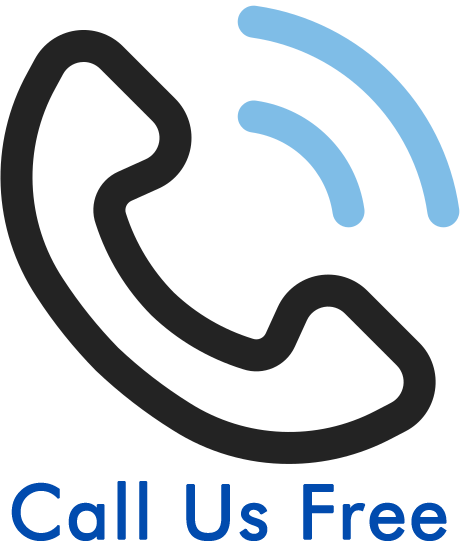By Stephen Bishop. Last Updated 9th April 2024. Welcome to our guide, which addresses the question “I had an accident on a trampoline, could I claim compensation for a personal injury?”. Trampolines have always provided fun and exercise for adults and children alike. Over the past decade or so, they have become affordable, which means more people now have them in their gardens. As well as trampolines at home, the popularity of trampoline parks has increased massively. While these trampoline parks have safety measures in place, accidents can still happen, and you may be able to claim compensation for an accident on a trampoline if it was caused by somebody else’s negligence.
This guide looks at when you could be eligible to file a trampoline injury claim, what evidence you need to provide, and what compensation level might be awarded in a successful personal injury claim against a responsible party.

Here at Legal Helpline, we could help you make a claim for yourself or on behalf of your child. We provide free legal advice and a no-obligation assessment of your claim. If one of the solicitors on our panel agrees to handle your claim, it will be on a No Win No Fee basis. To discuss your claim with us straight away, you can call an adviser on 0161 696 9685.
However, if you’d like more information on claiming for a trampolining injury before calling, please continue reading.
Jump To A Section
- I Have Had An Accident On A Trampoline, Could I Claim Compensation For A Personal injury?
- What Is The Time Limit For Claiming For An Accident On A Trampoline?
- I Signed A Waiver, Could I Still Make A Compensation Claim?
- Calculating Compensation For An Accident On A Trampoline
- Special Damages Personal Injury Claims May Include
- Steps To Take If Injured Using A Trampoline
- I Had An Accident On A Trampoline, Could I Claim Compensation For A Personal Injury With A No Win No Fee Solicitor?
- Trampoline Safety And Claims Resources
I Have Had An Accident On A Trampoline, Could I Claim Compensation For A Personal Injury?
When you are in a public place, such as a trampoline park, the controller of that space owes you a duty of care under the Occupiers’ Liability Act 1957. This means they should take steps to ensure your reasonable safety while you’re in the public space.
If you have been injured due to an accident at a trampoline park, then you may be eligible to start a compensation claim if:
- You were owed a duty of care.
- This duty was breached.
- This breach caused you to suffer injuries.
For example, if the operator of the trampoline park failed to perform any risk assessments before allowing members of the public to use the trampolines, they may be liable for any injuries suffered, and you may be able to claim compensation.
You will need evidence to support your trampoline accident claim and you can discuss the strength of your potential case and how to collect evidence with our advisors for free. If our team finds you have a strong claim, then they may also connect you with a solicitor from our panel who can provide support.
What Should A Trampoline Operator Do As Part Of Their Duty Of Care?
Duties a trampoline operator could carry out to fulfill their duty of care may include the following:
- Ensure all trampolines are maintained according to manufacturer guidelines
- Isolate any damaged trampolines and repair them before allowing customers on to them
- Make sure all customers wear the correct clothing
- Ensure training is provided on the safety rules before anybody uses the trampolines. This could be a verbal presentation or video presentation
- Manage areas such as foam pits to make sure only one person uses them at a time
- Have adequate supervision at all times
Should any of the above not happen and an injury is sustained as a result, you could be entitled to claim against the responsible party if you suffered an injury.
What Is The Time Limit For Claiming For An Accident On A Trampoline?
In accordance with the Limitation Act 1980, there is a three-year time limit for starting a personal injury claim. This typically starts from the date of your trampoline accident.
The time limit can, however, work differently under certain conditions. For example, if the injured party lacks the mental capacity to start their own claim, then the time limit will be frozen indefinitely. While the time limit is frozen, a litigation friend could start an injury claim on behalf of the party that has been harmed. If, however, the person later regains their mental capacity before a claim has been made, then they will have three years to start their own claim from the day of recovery.
If a child has been injured at a trampoline park, then the time limit for starting a claim will be put on hold until their 18th birthday. A litigation friend could start a claim on the injured child’s behalf before they turn 18. Otherwise, the child will have three years to start their own claim once they become 18 years old.
Contact our advisors for free today for more information on your eligibility to start a trampoline injury claim.
I Signed A Waiver, Could I Still Make A Compensation Claim?
As you ask, “I had an accident on a trampoline, could I claim compensation?”, you may wonder about waivers. Namely, many people believe they can’t claim for an accident on a trampoline because they signed a waiver. While that might be true if you breached the waiver’s terms, an example being that you failed to adhere to safety instructions, it’s not always the case.
For instance, if your accident was caused because of faulty equipment or because a lack of supervision allowed others to break safety rules and cause you an injury, then you could be entitled to make a claim. Therefore, don’t hesitate to call us if you believe your injuries were caused by negligence, even if you did sign a waiver.
Calculating Compensation For An Accident On A Trampoline
In this section, we look at potential compensation amounts for certain injuries. It’s important to note that every claim is unique and includes multiple parts. The personal injury claims compensation table below makes up just one part of your claim. A more personalised estimated compensation amount might be possible once your claim has been assessed.
| Type of Injury | Severity | Compensation Bracket | Details |
|---|---|---|---|
| Multiple Serious Injuries Plus Special Damages | Serious | Up to £400,000+ | If you have sustained multiple serious injuries in a trampoline park accident, then you may receive compensation for all of these plus related special damages, such as loss of earnings. |
| Brain Injury | Moderately Severe | £267,340 to £344,150 | The person will be seriously disables and depend on others and require professional care. |
| Severe Leg Injuries | Moderate (iv) | £33,880 to £47,840 | Includes complicated or multiple fractures of a single leg. Factors like the amount of treatment required and the imperfect union of fractures will determine compensation amounts. |
| Back injury | Moderate (ii) | £15,260 to £33,880 | Injuries to the back that cause disturbance to muscles or ligaments and cause backache can be included in this bracket. |
| Minor (i) | £9,630 to £15,260 | Soft tissue injuries of the back which takes between 2 to 5 years to recover fully but no surgery is required. | |
| Ankle injury | Moderate | £16,770 to £32,450 | A fractured ankle or torn ligaments in the ankle which cause disabilities like difficulty standing or walking for long periods. |
| Knee injury | Moderate (i) | £18,110 to £31,960 | A dislocated knee, torn cartilage or torn meniscus could all be covered by this bracket. |
| Neck injury | Moderate (ii) | £16,770 to £30,500 | This bracket covers wrenching-type and disc lesion injuries which cause limited movement, recurring or permanent pain, stiffness and the possible requirement for surgery. Also, claimants could become vulnerable to further neck injuries. |
| Shoulder injury | Serious | £15,580 to £23,430 | A dislocated shoulder with damage to the lower part of the brachial plexus which causes shoulder and neck pain is an example of an injury covered by this bracket. |
| Fracture of Clavicle | £6,280 to £14,940 | This bracket covers a fractured collarbone. | |
| Arm injury | Simple Fractures of the Forearm (d) | £8,060 to £23,430 | A bracket that covers simple fractures of the forearm. |
The figures shown are from a document used by solicitors, insurers, and courts called the Judicial College Guidelines (JCG). Each injury is based on how severe it is. Therefore, it’s vital that a solicitor can demonstrate the exact nature of your injuries and how they’ve affected you.
Our panel of solicitors insists on a medical assessment by an independent doctor. This will be carried out as locally as possible so that you don’t have to travel far. The doctor will perform a physical examination of your injuries and ask some questions. Once they’ve finished their assessment, a report would be produced detailing your injuries, the impact caused and if there are likely to be any ongoing symptoms.
Your solicitor would use the report as evidence to ensure any compensation awarded is at the right level for your suffering when making a trampoline accident compensation claim.
Special Damages Personal Injury Claims May Include
When claiming for a trampoline jumping accident, your solicitor will use two main parts, namely general and special damages. General damages are awarded for pain and suffering induced by your injuries. Examples were in the table from the previous section of this guide. Special damages, however, are paid to compensate you for financial losses caused by your injuries.
Here are some examples of special damages that could be included in your claim:
- Travel Costs
If you need to travel too and from medical appointments, the cost of fuel and parking fees can soon build up. Therefore, you could ask for these costs back. - Medical Fees
Following any treatment, you might have to pay for prescription medicines. If that’s the case, they could be claimed back. If you’re claiming on behalf of your child, the prescription will be free, but you could still claim for over the counter medicines like painkillers. - Care Costs
If it’s you that’s been injured and you need caring for, you could claim back any carer’s fees that you have to pay. However, if you have to care for your child while they recover, then your time might be compensated too. - Property Damage
In some cases, it’s possible to claim back the cost of the damaged property. For instance, if clothing was torn or damaged in the accident, then you could ask for the cost of replacing it. - Lost Earnings
In cases where you’ve been injured and need time off work to recover (or visit your GP), you could claim back any income you lost as a result. Also, if you or your child have suffered injuries that will affect the ability to work in the long-term, then compensation could be awarded for future lost income too.
Steps To Take If Injured Using A Trampoline
We’ve looked at potential compensation amounts, so we will now consider what evidence you could provide to support your claim. If you’re involved in an accident on a trampoline, steps you could take include:
- Seeking medical attention for any injuries. This is important because medical records can be used to prove what injuries were sustained.
- Reporting the accident if it happened at a trampoline park. Businesses must record incidents in an accident report book. A copy of their report can be used to prove dates, times and injuries that were reported.
- Take photographs of the trampoline if a defect caused the accident. Try to do this before any repairs are carried out.
- Ask for copies of CCTV covering the area.
- Obtain the details of any witnesses who saw what happened
Once you’ve gathered as much evidence as possible, the next step would be to contact a solicitor to discuss whether you could claim compensation for your injuries via a trampoline accident compensation claim.
I Had An Accident On A Trampoline, Could I Claim Compensation For A Personal Injury With A No Win No Fee Solicitor?
If you have a valid case, then a solicitor from our panel could offer to represent your trampoline accident claim under a Conditional Fee Agreement (CFA). This is a type of No Win No Fee agreement, and one benefit of it is that you won’t have to pay your solicitor for their work before the claim begins or while it is underway. Also, you usually don’t need to pay for your solicitor’s services if the claim fails.
If your claim succeeds, then your solicitor will take a success fee to cover their payment. This means they’ll take a small and legally capped percentage of the compensation awarded to you. The cap ensures that you’ll receive most of the compensation handed out.
To learn more about working with a No Win No Fee solicitor or other aspects of making a personal injury claim, please contact our advisors for free today. They’ll be happy to answer any questions you may have. To get in touch, you can:
- Call 0161 696 9685
- Use our online contact form.
- Or you can use or 24/7 live chat service.
Trampoline Safety And Claims Resources
Thanks for taking the time to read our guide about a trampoline accident compensation claim. Hopefully, you’ll now have all of the information you need to decide whether you’ll begin a claim or not. We’ve provided some more useful guides for you below and also some external links too.
Trampoline Park Safety – Information on trampoline safety from ROSPA, a UK-based accident prevention charity.
Broken Bone Information – This guide from the NHS provides information on the diagnosis of different types of broken bones.
Back Pain – Information from the NHS on the causes and treatment of back pain.
Ankle Injury Claims – A guide that shows when a personal injury lawyer could help you claim for different types of ankle injuries.
Public Park Accidents – This guide covers personal injuries claims for injuries sustained in a public park.
Wrist Injury Claims – In this guide, we look at claiming for a wrist injury as this is a fairly common trampoline injury.


